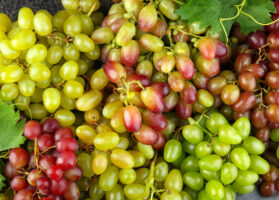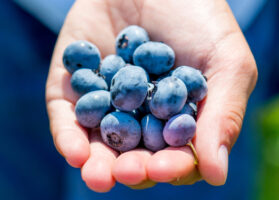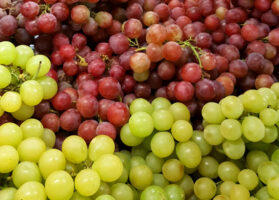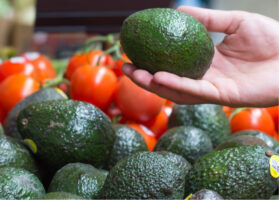Michigan apples hit all-time peak
Overview of apples from Michigan in the U.S. market, complemented by charts from Agronometrics. Original published on November 25, 2022.
By a wonderfully large margin, in 2022 Michigan is enjoying a record-breaking fresh apple crop.
Don Armock, president of Riveridge Produce Marketing, Inc., Sparta, MI, on Nov. 23 indicated his firm has surpassed its all-time production record by 20-25%. Riveridge packs more than half of Michigan’s fresh apple crop. The firm has a presence in all but one of Michigan’s apple producing areas.
In August the Michigan Apple Committee announced a crop estimate of a whopping 29.5 million bushels. This is 10 million more bushels than in the 2021 season. Michigan apple growers produced 15.6 million bushels last year, according to the USDA. Informal estimates now place 2022-23 volume at about 34-38 million bushels!

Source: USDA Market News via Agronometrics.
(Agronometrics users can view this chart with live updates here)
Armock said this banner season is especially good news because it follows three consecutive disappointing Michigan apple crops. Part of the reason the 2022 crop was so good is that the trees had not been stressed by large crops for a long time. It was a strong bloom and fruit set. This year, Michigan apple trees were tight on maturity, with the fruitlets on the trees ranging in maturity within three to five days. Some years that span can vary by two weeks.
“It’s a very, very large crop. The challenge has been getting enough bins and storage,” he said. The few growers who had production problems have rented their bins. Riveridge also had new wooden storage bins created. Virtually all the fresh crop apples immediately went into either conventional refrigeration or controlled atmosphere storages. Once the traditional storage areas were filled, the alley ways between the rooms, which are also refrigerated, were then stacked to the brim with more apple bins.
By mid-November, almost all the fruit that was placed into standard refrigeration had already been shipped.
Given short crops and short shipping seasons in recent years, Riveridge saw a contraction of its national markets. He was pleased that old customers were there to buy the new crop. He expects to be shipping until the 2023 crop comes off the trees.
Riveridge’s apple marketing position is stronger because of a short crop in the Pacific Northwest. “We plan on filling those voids. It really is an ideal situation for us.”
Over the last 20 years, and especially in the last decade, Armock’s orchard management strategy has been a design to be harvest-friendly “and up our ability to significantly push bushels per acre.” With an ideal growing season, that high efficiency plan paid off in spades.

Source: USDA Market News via Agronometrics.
(Agronometrics users can view this chart with live updates here)
These orchard designs will continue to excel in the future, he added.
Another strategic move for Riveridge was growing apple varieties and strains that please buyers and consumers. Galas and Fujis are key varieties for Riveridge. An industry that has focused on expensive, proprietary varieties has tended to confuse consumers.
Because of a lack of storage and bins, a few second- or third-pick apples, and some fruit of lower value, was left on the trees. Armock is unsure of what percentage of fruit was left unharvested.
Armock was pleased to have had enough labor to handle harvest.
While he calls this an ideal growing season, if there was a disappointment it was an average pack out percentage. But even discounting culls, the volume is record breaking.
The News in Charts is a collection of stories from the industry complemented by charts from Agronometrics to help better tell their story.
Access the original article with this (Link)






